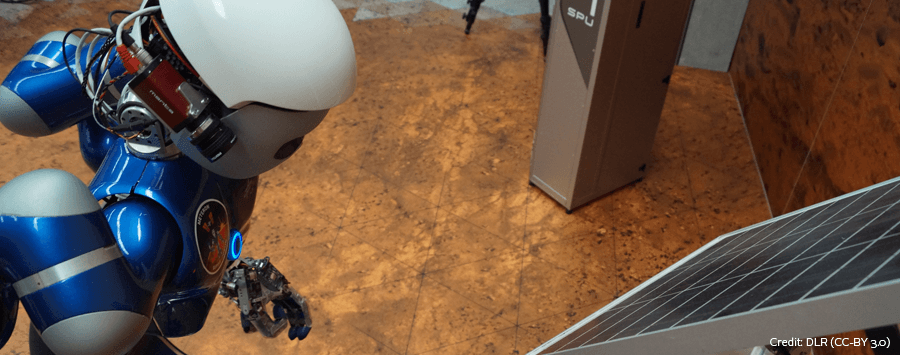With the latest episode of the Star Wars saga recently hitting theaters, space robots may still look like a funny, and unrealistic futuristic fantasy to science fiction fans. The truth is that they already exist today, and scientists as well as engineers keep working on designing robots for space exploration.
The reasons why it makes sense to send robots to space are obvious: space travel is still a dangerous endeavor, and using robots for particularly dangerous tasks such as repair work outside of spacecrafts avoids risking the lives of astronauts. Remote planets such as Mars require months of travel to reach, which is why only machines have explored it so far.
More versatile than industrial robots
Unlike industrial robots, space robots are humanoid robots designed to be as close to humans as possible in terms of size and morphology. One key reason for that is that space is very limited in spaceships or the International Space Station (ISS), and there is no possibility to setup a dedicated, tailored workspace for a robot. Robots must adapt to an environment designed for humans and be able to use the same tools and control panels as the human crew or even collaborate with humans. They also need to be able to accomplish more diverse tasks than automated systems on the factory floor.
As a result, research centers and space agencies design robots that actually look as if they came from a science fiction movie. Two prominent examples are Robonaut 2 (R2), designed by NASA in co-operation with General Motors, and Rollin’ Justin, a robot currently under development at the German Aerospace Center (DLR). R2 is actually already operating aboard the ISS, while Rollin’ Justin is still under development for future Mars exploration.
3D vision for object interaction
3D vision is key to allow such robots to apprehend their environment and interact with it. This can be achieved with a combination of several area scan cameras, time-of-flight cameras, and other sensors. Both R2 and Rollin’ Justin rely on Allied Vision cameras for stereoscopic vision in the visible spectrum. Just like a human being has two eyes, R2 has two Allied Vision Prosilica GC cameras built into its head, and Rollin’ Justin two Allied Vision Manta cameras mounted on both sides of its head. This allows the robots to have a better sense of depth when capturing images of their environment. 3D vision is important to enable space robots to precisely locate and grab objects and perform tasks such as plugging devices or operating switches. The DLR research team published videos of Rollin’ Justin catching balls tossed in its direction or preparing coffee with a capsule coffee machine. Looking at these two examples, you can’t help but think that space robots like C3PO may not be that unrealistic after all.
Resources Robonaut Project:
Resources Rollin’ Justin:
